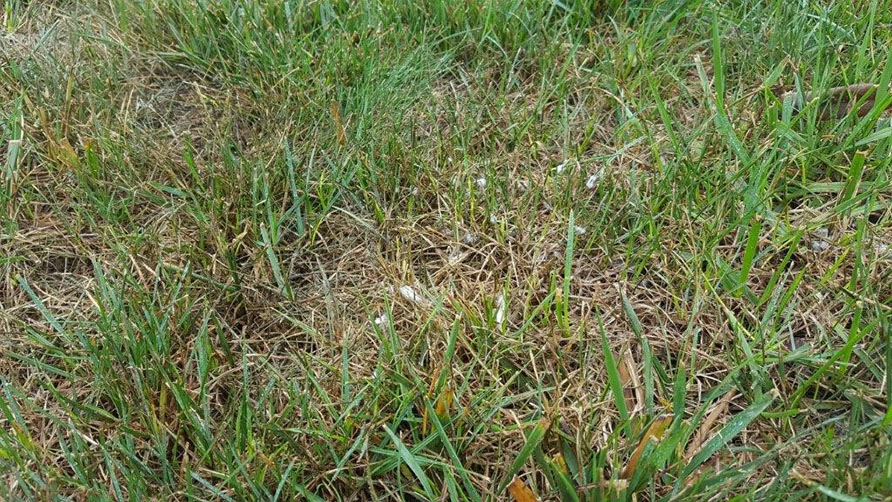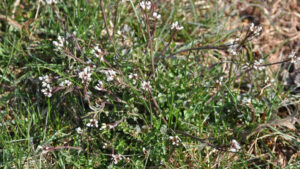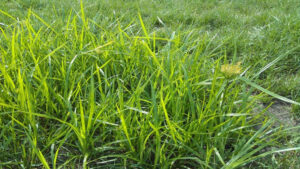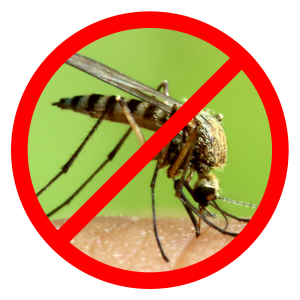2018 Lawn Care Summary

It seems every year in this age of “climate change” there is some notable shift in the weather. Along with each of these changes comes new challenges to the lawn care provider. The challenge this year came in the form of precipitation. From the very snowy March to the tremendously wet late summer, this year was anything but conventional for turf managers.
Spring Broadleaf Weeds
Snow cover in March delayed the start of the active growth of the turf. This means that broadleaf weeds, and undesirable grass species that thrive in wet/cold soil conditions have an opportunity to grow without much competition. Once the snow melts away there are often very thin to bare areas where grass plants have shrunk in the overly saturated, cold conditions, and yet weeds such as hairy bittercress, chickweed and wild onion have persisted. While these are not difficult weeds to control, they remain on the lawn until there is enough snow melt for the initial treatment to be applied. Anytime the weather promotes weed growth, and prohibits lawn applications…it’s a problem. Often, full-service programs can create the illusion that broadleaf weeds are prevented, but the truth is that we are only able to control what is actively growing on the lawn when we are present. So, if you feel as though you saw more weeds at the start of the season than normal, that may have been true depending on the timing of your first treatment.

Hairy bittercress is a common early spring broadleaf weed.
The extended wetter/cooler period also promoted the growth of rough bluegrass (poa trivialis) and annual bluegrass (poa annua). These two grass species thrive under wet/cool conditions. They both have a much lighter green color which makes them stand out among the other turf types. While this attribute is bothersome enough for most homeowners, both species also stop producing growth once the weather becomes warmer and drier causing dead patches to appear. To top it all off, neither grass is controllable with any normal treatment program offered by lawn care services. While these grasses may sound horrific, keep in mind they aren’t generally a noticeable issue (in the absence of a drainage issue or improper watering) unless we are experiencing very cool/wet weather for extensive periods.

Image on the left shows annual blue grass or poa annua. Image on the right shows rough blue grass or poa trivialis.
Disease and Rainfall
Snow lasting well into March is never good, but its occurrence is not that uncommon for the northeast; however, the amount of rain that fell at the start of September this year was without precedent, and the ensuing disease outbreak it triggered was epic.
Generally, in September the active disease period subsides, and lawns start to recover from the stressful summer. The warm days and cool nights during this time are perfect conditions for promoting grass growth and discouraging any sort of major disease activity. This year, what the weather brought instead was frequent, heavy rainfall with very humid nights. This overly saturated, moist-air environment is absolutely perfect for promoting fungal activity. Pythium blight and grey leaf spot in particular were incredibly prominent. Lawns observed in the morning dew (which lasted until almost noon some days) were covered with mycelium that resembled cobwebs to cotton-ball like or both. Seeing the physical presence of these fungi evident on a handful of lawns for the year is not uncommon. Seeing lawns covered in this type of growth on nearly every lawn, every morning, of every day… just doesn’t happen. The cure for such disease activity is to allow the lawn time to dry out, and to core aerate. The presence of oxygen in the soil pores keeps the disease from being able to actively spread. Usually allowing enough time for water movement between irrigation cycles and further oxygenating the soil through core aeration, is more than enough to promote turf growth and reduce disease activity. The problem was that the rain was so frequent, and the air was so humid, that the lawns were never able to dry out. With conditions remaining favorable for so long, lawn disease activity was rampant, and damage to the turf was wide-spread.

Image on the left shows a lawn with grey leaf spot. Image on the right shows a lawn with pythium blight.
What about treatment?
Shouldn’t a “full service” program include applications that prevent such things from happening? The answer to this question is yes and no. Yes, there is treatment for disease that exists in the form of fungicides. Applications of fungicides can be done periodically before disease outbreaks occur to prevent them from happening, or to help suppress activity once your lawn is already affected. No, they are not included in full service programs automatically. Why not? The answer is simple, cost. Fungicides are expensive, and on top of that they are only effective for a few weeks at a time, so applications need to be done frequently to prevent disease.
Preventative disease programs are offered by lawn care service providers but are usually only recommended to customers facing the same disease issue year after year. The benefit of a fungicide application is only realized if the disease is treated prior to it laying waste to the large areas. Asking someone to spend additional money on an application that won’t make the lawn look any better just isn’t practical. The best recommendation in this scenario was to spend the money on dealing with the disease culturally through core aeration, seeding, or a combination of the two. After all, a fungicide will only address the disease activity. Core aeration not only helps quell the fungus activity, but also promotes turf recovery, so its benefit is two-fold.
Prevention
So how does one keep this from happening ever again? In truth, there is no way to fully prevent this kind of outbreak from occurring. The best way to stay proactive is with good cultural practices. Core aerate the lawn at least every other year, avoid watering the lawn too frequently (no more than twice each week), and seed the lawn with newer disease resistant varieties. At the end of the day though, it is important to realize that lawns are a lot like us. No matter how healthy they are, they can still become sick.
Summer Weeds
In addition to disease, the excess moisture in the soil also meant a lot more weed growth than normal. Warm-season weed growth is usually kept in check by lower soil moisture, exploded at summer’s end with the arrival of all the rain. Crabgrass and Nutsedge growth were both noticeably worse.
Crabgrass prevention is part of any basic service program and gets put down in the spring prior to its emergence in early summer. These preventative applications form a barrier that controls crabgrass plants as they attempt to breach the soil surface. The barrier typically lasts long enough to keep crabgrass under control into July. When August arrives the control has worn off, but by then it is so dry that any new growth is very minimal. This year however, there was more than enough soil moisture to promote the crabgrass growth once the barrier wore off.
Nutsedge is a warm-season perennial that is always an issue for lawn care providers each summer. Like crabgrass, it starts becoming noticeable sometime in June, but the difference is that there is no preventative treatment for this nuisance. Plants can only be controlled as they appear in the lawn. Nutsedge is a marsh-grass by nature and prefers areas that stay consistently moist, and so typically it is only a larger problem on irrigated properties or properties with poor drainage. However, with the rain this year, every lawn was consistently saturated. Homeowners that don’t usually have to worry about controlling this weed saw growth of nutsedge soar out of control on their properties. And while a few companies include treatment of this weed on full-service programs, most only offer control at an additional charge due to the high cost of nutsedge control products.

This picture shows the color and height difference between the weed nutsedge and preferred grass varieties.
Closing Thoughts
While some maintenance programs may have underperformed this year in the eyes of a lot of homeowners, it is important to keep in perspective just how out of the ordinary this year was. If the lawn treatment program in place has been successful in years prior to this, then making adjustments to the annual regimen to allow for this type of weather pattern would be foolish. The best lawn care providers enact programs that are designed to function at a high level within the climate and rainfall that is typical. And when these programs underperform due to changes in the weather, the good companies know the best thing they can do is take the time to communicate to their clients’ what adjustments in the service plan may be needed for that year.
If you have any questions regarding your lawn care service, or would like to receive a free estimate, please give our office a call at 908-281-7888.




